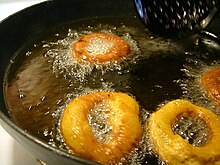hiiii all ada yang nonton 5 sos concert in jakarta ?
entar kita ketemuuu yaaaaa
This article is about the band. For their 2014 album, see 5 Seconds of Summer (album).
entar kita ketemuuu yaaaaa
This article is about the band. For their 2014 album, see 5 Seconds of Summer (album).
| 5 Seconds of Summer | |
|---|---|

5 Seconds of Summer at the ARIA Music Awards of 2014. From left to right: Luke Hemmings, Calum Hood, Ashton Irwin, and Michael Clifford
| |
| Background information | |
| Also known as | 5SOS |
| Origin | Sydney, New South Wales, Australia |
| Genres | |
| Years active | 2011–present |
| Labels | |
| Website | www |
| Members |
|
5 Seconds of Summer (commonly abbreviated as 5SOS) are an Australian rock band from Sydney that formed in 2011. The group were originally YouTube celebrities, posting videos of themselves covering songs from various artists during 2011 and early 2012. They rose to international fame while touring with One Direction on the Take Me Home Tour.
The group have been referred to as a boy band in the media, though the members reject this description.[1][2][3][4][5] In early 2014, the band released "She Looks So Perfect" worldwide as its debut single, which topped the charts in Australia, New Zealand, Ireland and the United Kingdom. The self-titled debut studio album was released in June 2014, which peaked #1 in 11 countries, and followed by a live album titled LiveSOS. The band released their second albumSounds Good Feels Good in 2015.
2011–12: Origin and debut
5 Seconds of Summer began in 2011 when Luke Hemmings, Michael Clifford and Calum Hood, who all attended Norwest Christian College, started posting videos of themselves performing covers of popular songs together on Hemmings'YouTube channel. Hemmings' first video, a cover of Mike Posner's "Please Don't Go", was posted on 3 February 2011.[6]Their cover of Chris Brown's "Next to You" received over 600,000 hits.[7] In December 2011, they were joined by drummer Ashton Irwin,[8] and the four-man line up was completed.[9]
The band attracted interest from major music labels and publishers, and signed a publishing deal with Sony ATV Music Publishing.[10] Despite having had no promotion apart from on Facebook and Twitter,[10] their first music release, an EPentitled Unplugged, reached number 3 on the iTunes chart in Australia[10] and the Top 20 in both New Zealand and Sweden. Their international following increased significantly once again when One Direction member Louis Tomlinson posted the link to their YouTube video of their song "Gotta Get Out", stating that he'd been a fan of 5 Seconds of Summer "for a while".[11] 5 Seconds of Summer were once again the subject of interest for One Direction following the release of their first single, "Out of My Limit", on 19 November 2012, this time with Niall Horan tweeting the link to the video clip.[12]
5 Seconds of Summer spent the second half of 2012 writing and developing their sound with Christian Lo Russo and Joel Chapman of Australian band Amy Meredith, with whom they wrote two of the songs that feature on their second EP Somewhere New: "Beside You" and "Unpredictable". The EP was also co-produced by Joel Chapman. 5 Seconds of Summer released their first single "Out of My Limit" on 19 November 2012, with the video clip for the song receiving over 100,000 views within the first 24 hours.[13] In December 2012, the boys embarked on a songwriting trip to London, where they wrote with various artists includingMcFly,[14] Roy Stride of Scouting for Girls, Nick Hodgson of Kaiser Chiefs,[15] Jamie Scott,[16] Jake Gosling, Steve Robson and James Bourne of Busted.[17]
2013–14: 5 Seconds of Summer and LiveSOS
On 14 February 2013, it was announced that 5 Seconds of Summer would support One Direction on their worldwide Take Me Home Tour.[18] The tour kicked off atthe O2 Arena in London on 23 February 2013, and 5 Seconds of Summer joined One Direction for shows in the UK, US, Australia and New Zealand, including seven shows at Allphones Arena in 5 Seconds of Summer's home town of Sydney.[19] Whilst on a break from the Take Me Home Tour, 5 Seconds of Summer returned home to Australia where they played a National headlining tour, with all dates selling out within minutes. It was around this time when the band began to gain popularity and become more well-known.[20] On 21 November 2013, the band announced that they had signed to Capitol Records.[21]
On 5 February 2014, 5 Seconds of Summer listed their debut major label single "She Looks So Perfect" for pre-order on the iTunes Store.[22]
The connection between 5SOS and One Direction extends to both artists being managed by London-based Modest Management. This has led to 5SOS being called a boy band in the media.[1] Members of the band have said the group is not a boy band.[23] Unlike many boy bands, they write their own songs, play their own instruments, and they are not primarily a dance group.[24] Nevertheless, the band has attracted a fanatical following of girls much like other boy bands.[25] Ashton Irwin has compared the band's female following to Fall Out Boy which also has a sizable female fanbase. John Feldmann, frontman of Goldfinger and producer on 5 Seconds of Summer, attributes 5 Seconds of Summer's fanbase to "a fundamental change in the pop punk demo[graphic]", mentioning the gradual demographic shift away from the majority male audiences of early 1990s pop punk acts such as Blink-182 and Green Day.[26]
In late March 2014, "She Looks So Perfect" was released in UK. Despite only one day on top in the British iTunes store and ending its week in the lower end of the top 10, 5 Seconds of Summer became only the fourth Australian band to have a UK number-one single, and the first to do so in 14 years.[27] In the following week's chart the song dropped to number 10, which was the biggest drop from number one since McFly's ""Baby's Coming Back"/"Transylvania" fell from number one to number 20, also in its second week on the UK chart.
On 5 March 2014, it was announced that 5 Seconds of Summer would join One Direction again, supporting them on their 2014 Where We Are Tour in the US, Canada, UK and Europe.[28] On 9 April 2014, their fourth EP She Looks So Perfect debuted at number 2 on the Billboard 200.[29]
On 9 May, they released their second single, "Don't Stop". It debuted at Number 2 on the UK Singles Chart, 3,000 behind Ella Henderson's "Ghost".[30] Billboardsaid 'In the vein of Green Day's "She" and Blink-182's "All The Small Things," "Don't Stop" is 5SOS' bid for a deceptively charming pop-punk anthem, with lyrics that are stickily sweet in their awkward flirtatiousness. The bridge could be more polished, but that hook is a highlight of the whole album'.[31] It peaked at 1 in 4 countries and was in the top 10 for 8 countries overall.
On 13 May 2014, the band announced that their debut self-titled album, would be released on 27 June 2014 in Europe and Australia with other releases coming later. The album won a Kerrang! award; Luke Hemmings said it was a real honour to win one, as all the band's idols are in Kerrang!.[32] The album debuted at No. 1 on the Billboard Chart and peaked at No. 1 in 13 countries as well as the Top 10 in 26 countries. On 15 June 2015, the band released their fourth EP Don't Stop, which not available to purchase in the USA, Canada and Mexico.[33]
On 15 July 2014, the band released their third single, "Amnesia", which was the only song not written by the band members themselves, but by Benji and Joel Madden of Good Charlotte, the American pop punk band. Billboard said of the track, 'With a surprisingly affecting vocal performance and the most searing lyrics on the album, new single "Amnesia" establishes itself as 5 Seconds of Summer's successful Serious Pose. Taking older listeners back to the relative heartache of dissolving high school romance, "Amnesia" demonstrates the versatility of 5SOS, and one wonders why it's buried at the end of the group's debut album."[31] On 5 September 2014, they released their fifth EP Amnesia, but not available in America and Mexico.[34]
On 12 October 2014, the band released their fourth single, "Good Girls", and the music video logged over two millions views within 48 hours, making it their highest debut to date.[35] On 16 November 2014, they released their sixth EP Good Girls and become number one on UK iTunes Chart.[36] The band released a cover song "What I Like About You" by American rock band The Romantics as the first single from their live album LIVESOS.[37]
2015: Touring and Sounds Good Feels Good
In May 2015, the band embarked their first headlining tour "Rock Out With Your Socks Out Tour" of Europe, Australia, New Zealand and North America.[39][40][41] On 17 July 2015, 5 Seconds of Summer released the first single "She's Kinda Hot" from their upcoming second studio album.[42]
On 12 August 2015, the band announced that their second studio album is called Sounds Good Feels Good. It was released worldwide on 23 October 2015.[43] On 28 August 2015, the band released their seventh EP She's Kinda Hot in UK and Ireland only.[44] On 9 October 2015 the band released Hey Everybody! as the second single from the album.
On October 9, 2015 the band announced their Sounds Live Feels Live Tour, to be held in 2016 with dates in Asia, the UK, Ireland, and North America announced so far.[45]
Hi or Hey Records
On 27 January 2014, 5SOS announced that they would be setting up their own label, Hi or Hey Records.[46]
On the Hi or Hey Records website, the band explained that not only would they be releasing all of their music through Hi or Hey Records in conjunction with Capitol Records, but they would also be signing a roster of their own bands and releasing them via the label.[47]
Musical style and influences
5 Seconds of Summer's musical style has been described as pop punk,[49][50][51][52] pop rock[50][53][54][55] and power pop.[56] Rolling Stone magazine called them "emo-gone-pop".[57] They cite McFly, Blink-182, All Time Low, Mayday Parade, Green Day, Boys Like Girls and Busted as their influences.[58][59]
Band members
- Luke Hemmings (born 16 July 1996, 19 years old)[60] – lead vocals, rhythm guitar
- Michael Clifford (born 20 November 1995, 20 years old)[61] – guitar, vocals
- Calum Hood (born 25 January 1996, 20 years old)[62] – bass guitar, vocals
- Ashton Irwin (born 7 July 1994, 21 years old)[63] – drums, vocals
Discography
Main article: 5 Seconds of Summer discography
- 5 Seconds of Summer (2014)
- Sounds Good Feels Good (2015)
Tours
Headlining
- Mini Australian Tour (2012)
- Twenty Twelve Tour[64] (June 2012)
- First New Zealand Show[65] (3 November 2012)
- Pants Down Tour (2013) (Australia)
- UK Tour[66] (February & March 2014)
- 5 Countries 5 Days European Tour[67] (March & April 2014) (Sweden, Germany, France, Italy & Spain)
- Stars, Stripes and Maple Syrup Tour (April 2014) (North America)
- There's No Place Like Home Tour (May 2014) (Australia)[68]
- Rock Out with Your Socks Out Tour (May - September 2015) (UK, Europe, Australia, New Zealand, USA, Canada)[39][40][41]
- Sounds Live Feels Live World Tour (2016) (Asia, UK, Ireland, Europe, USA, Canada)[69]














